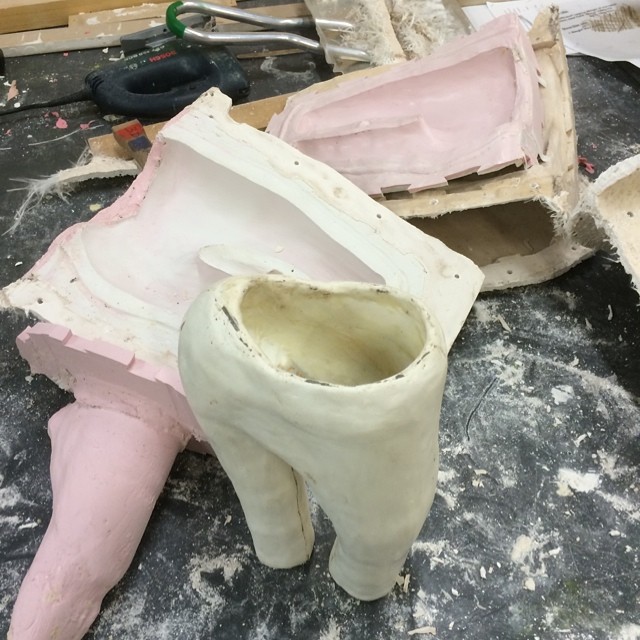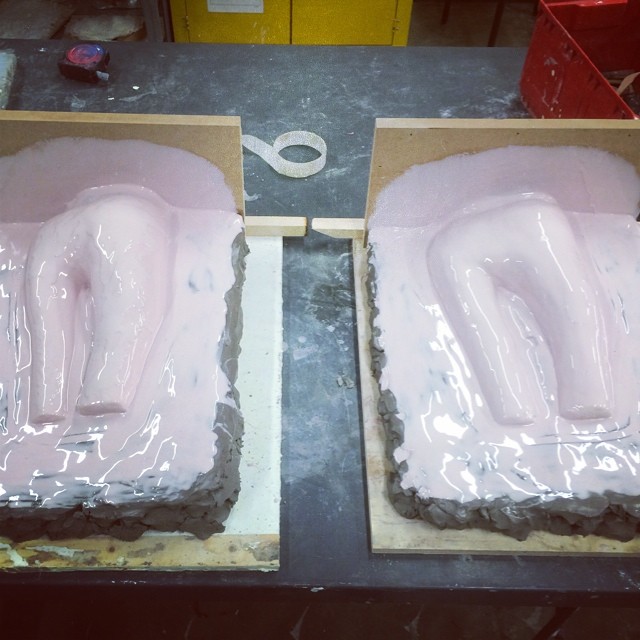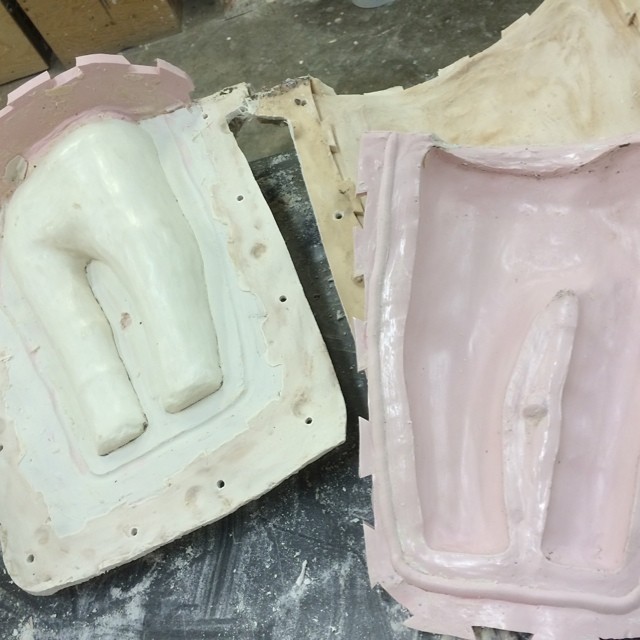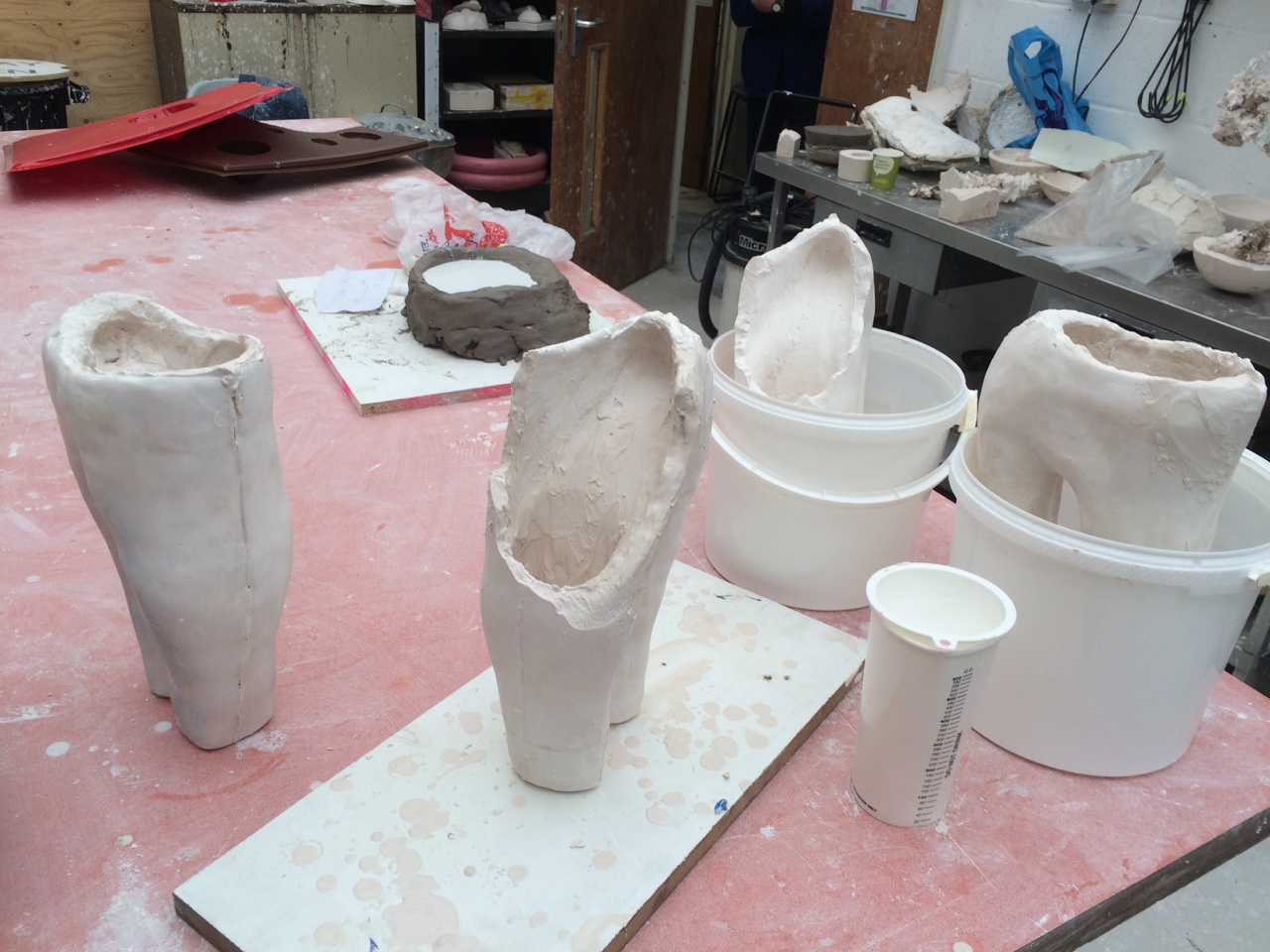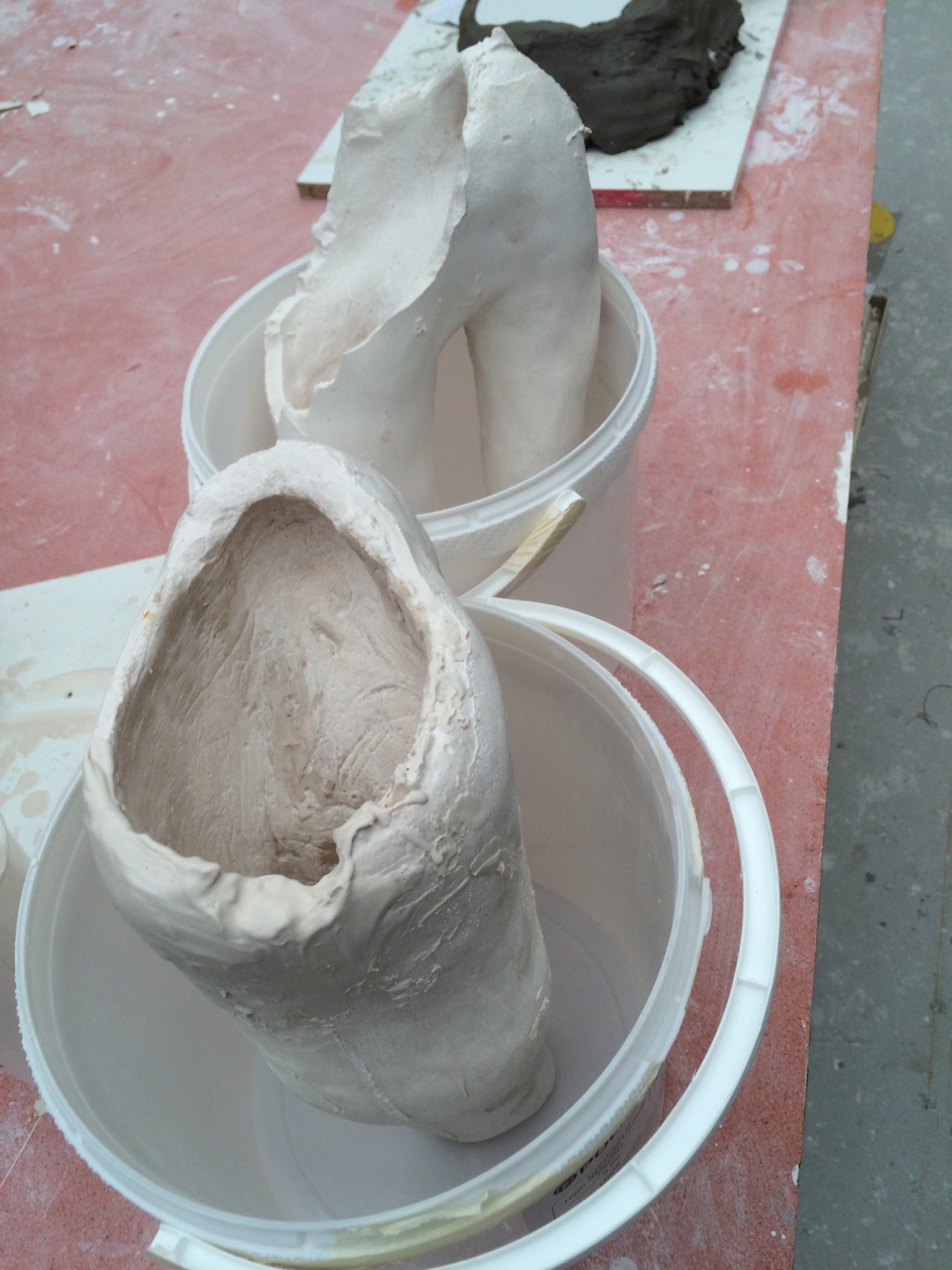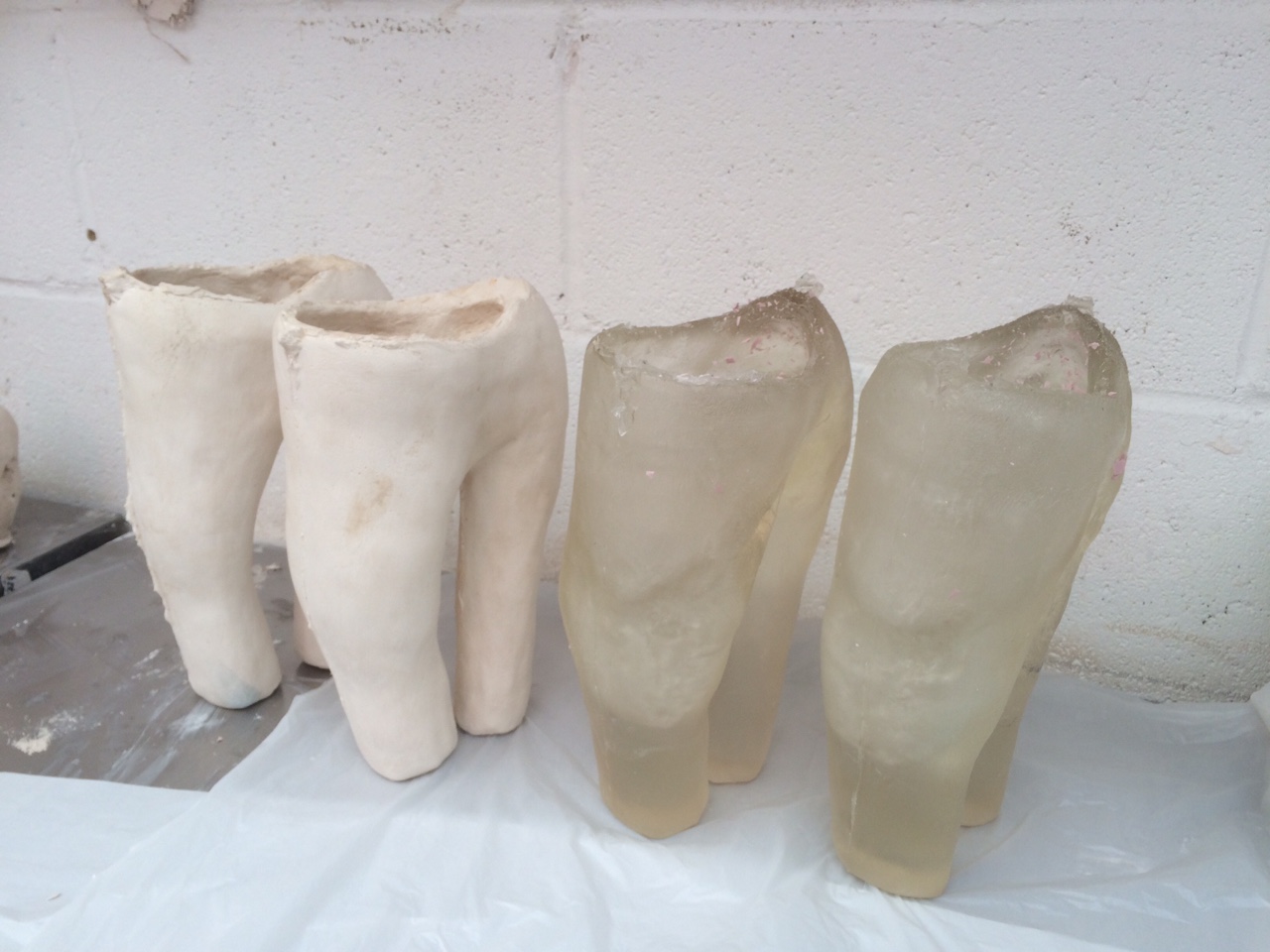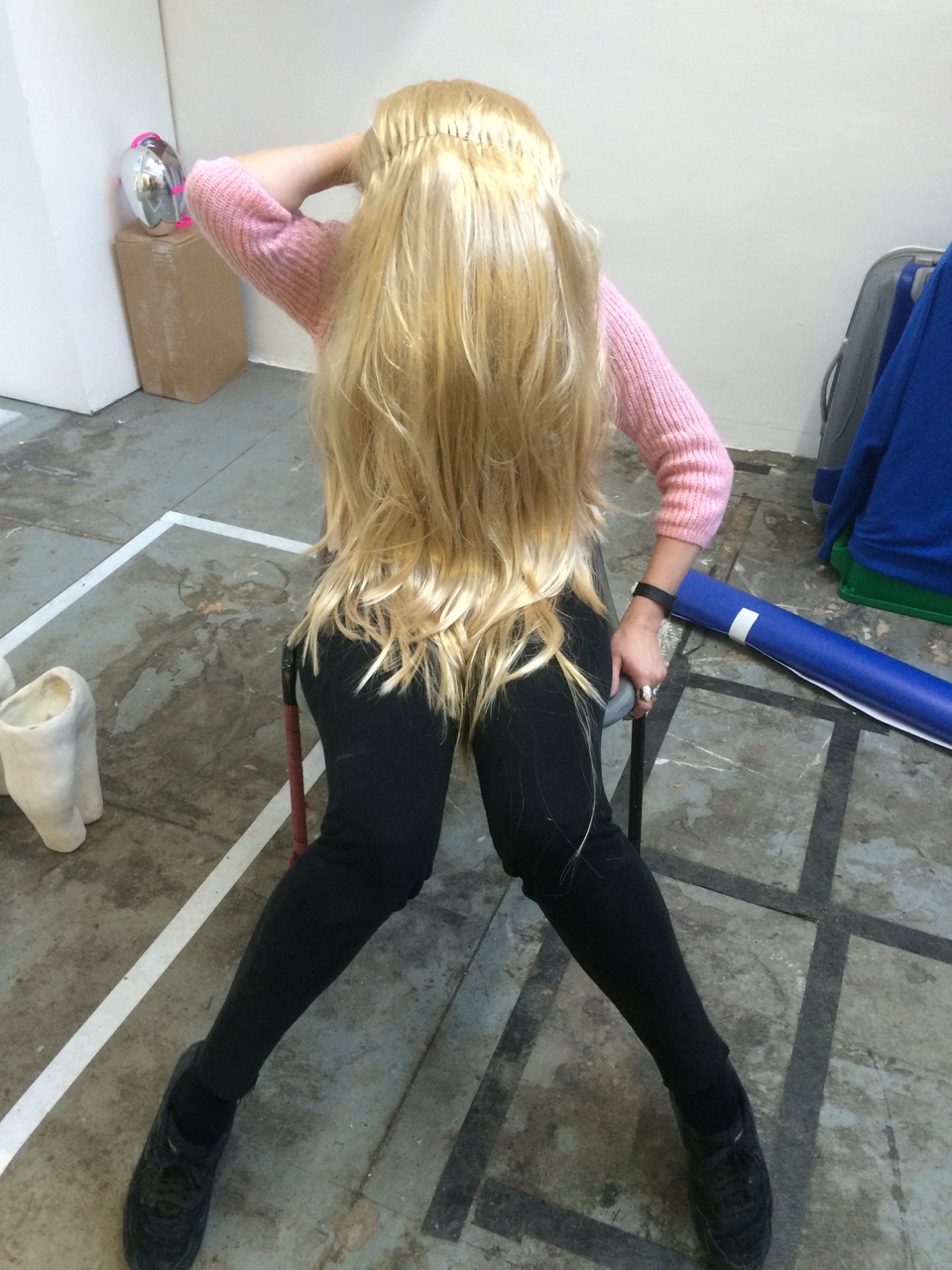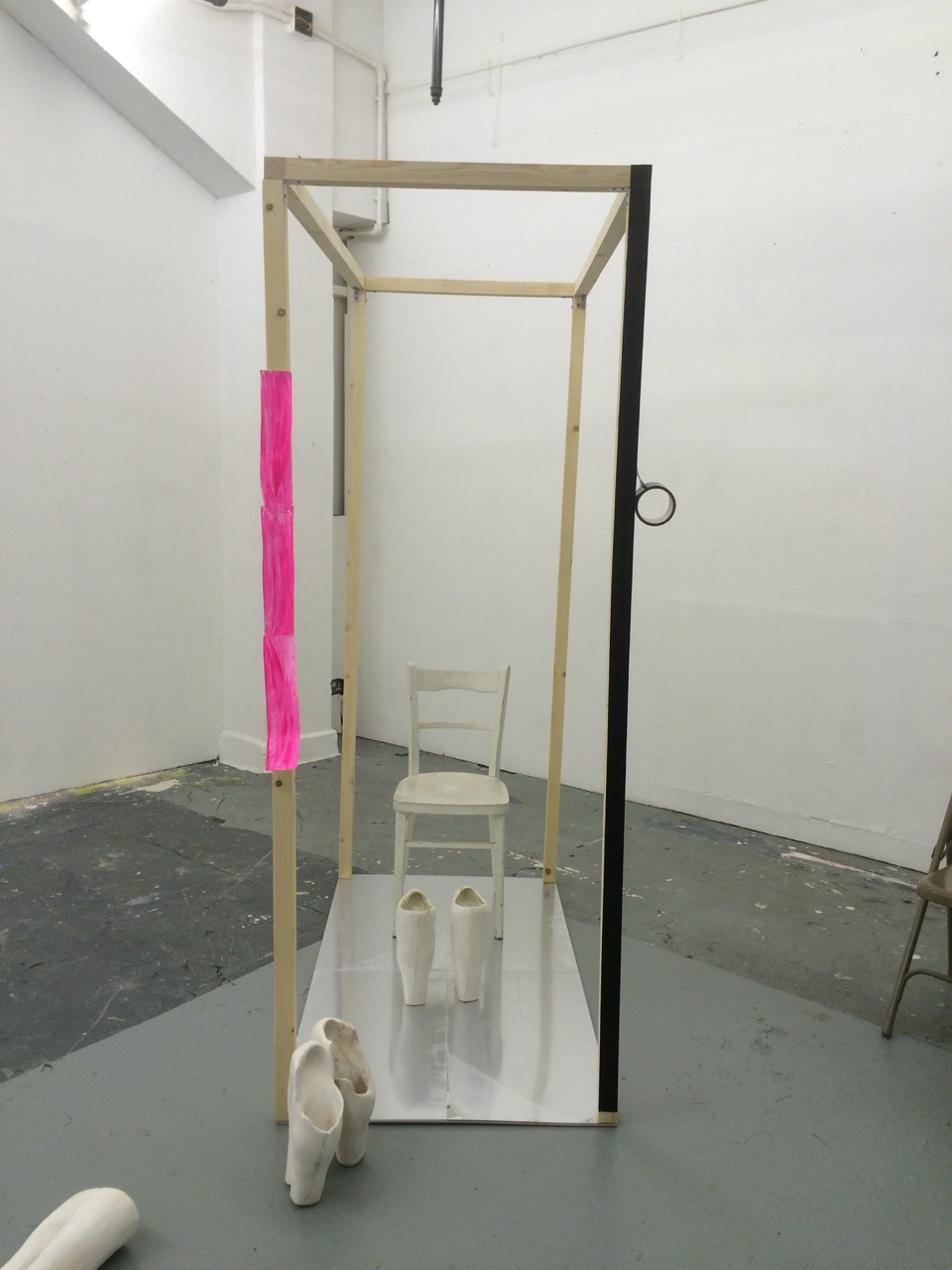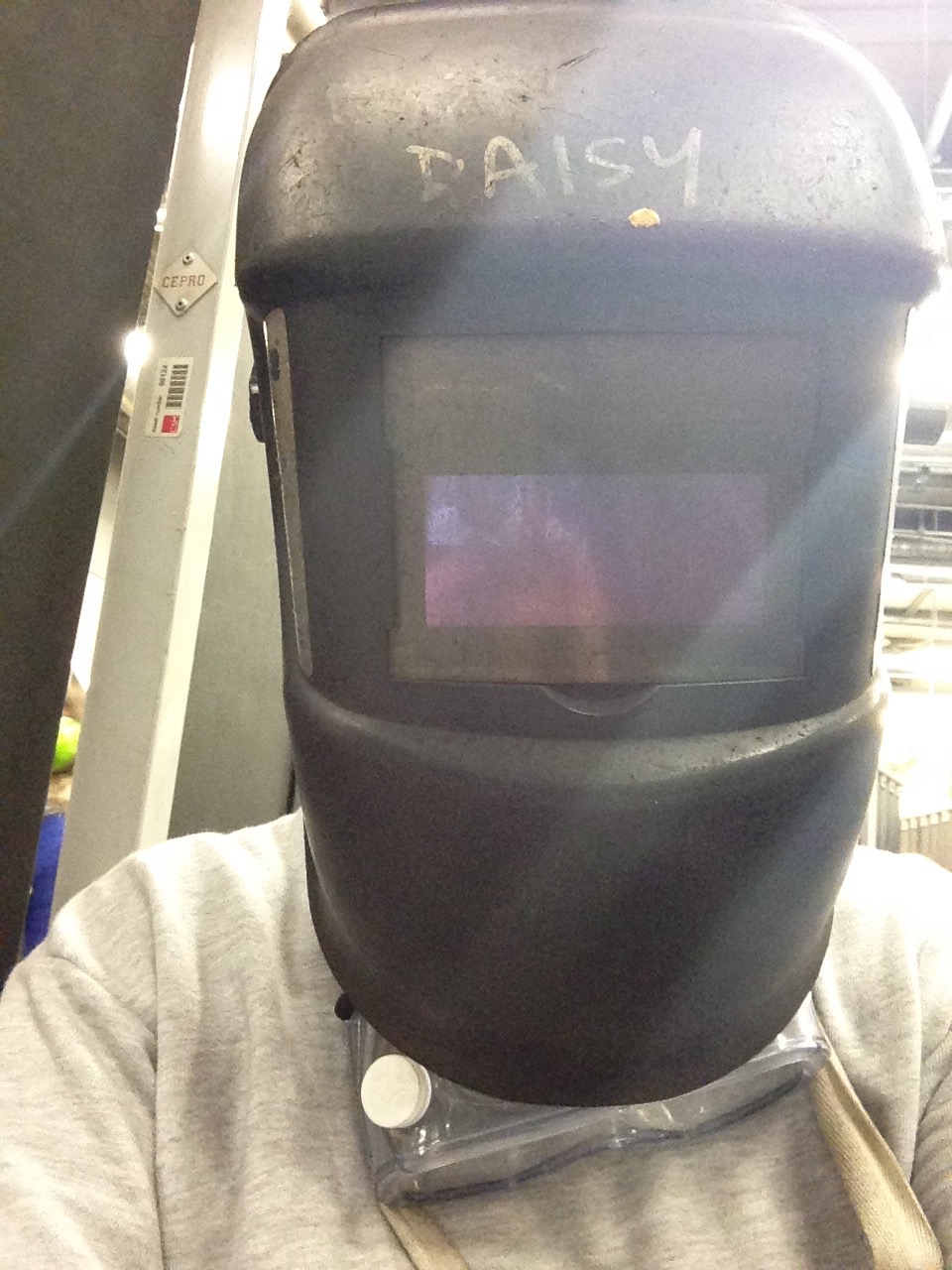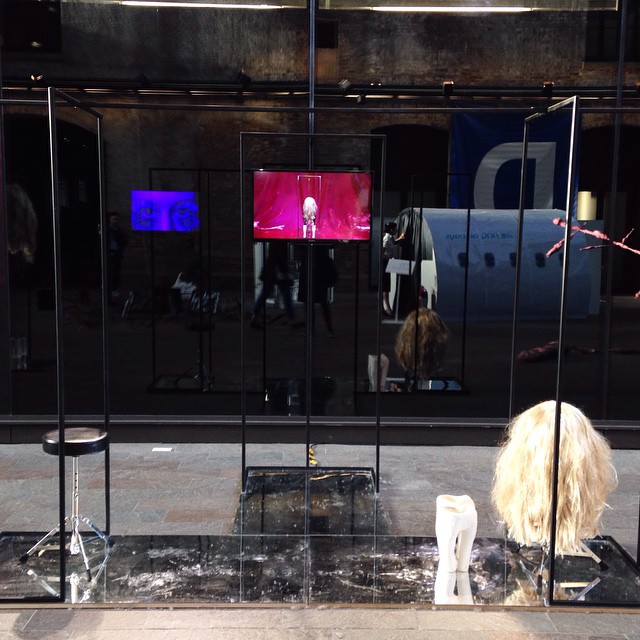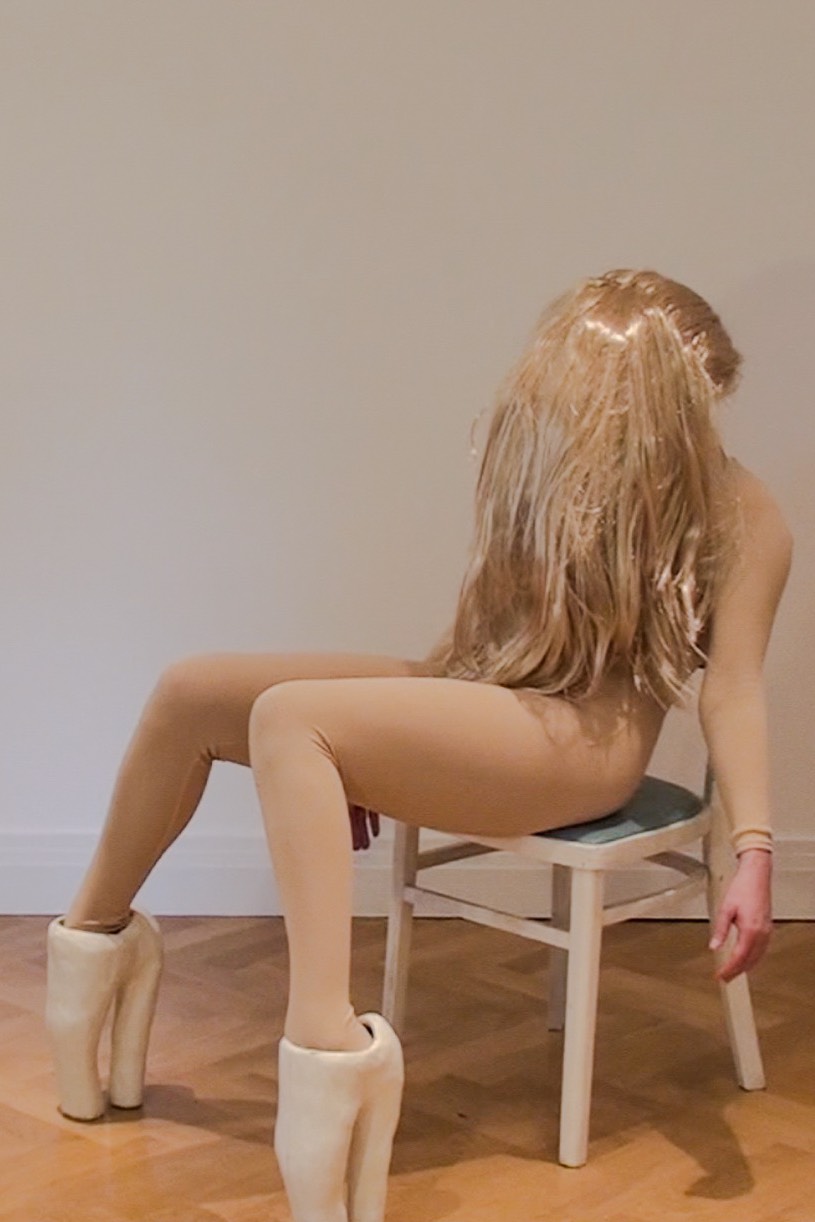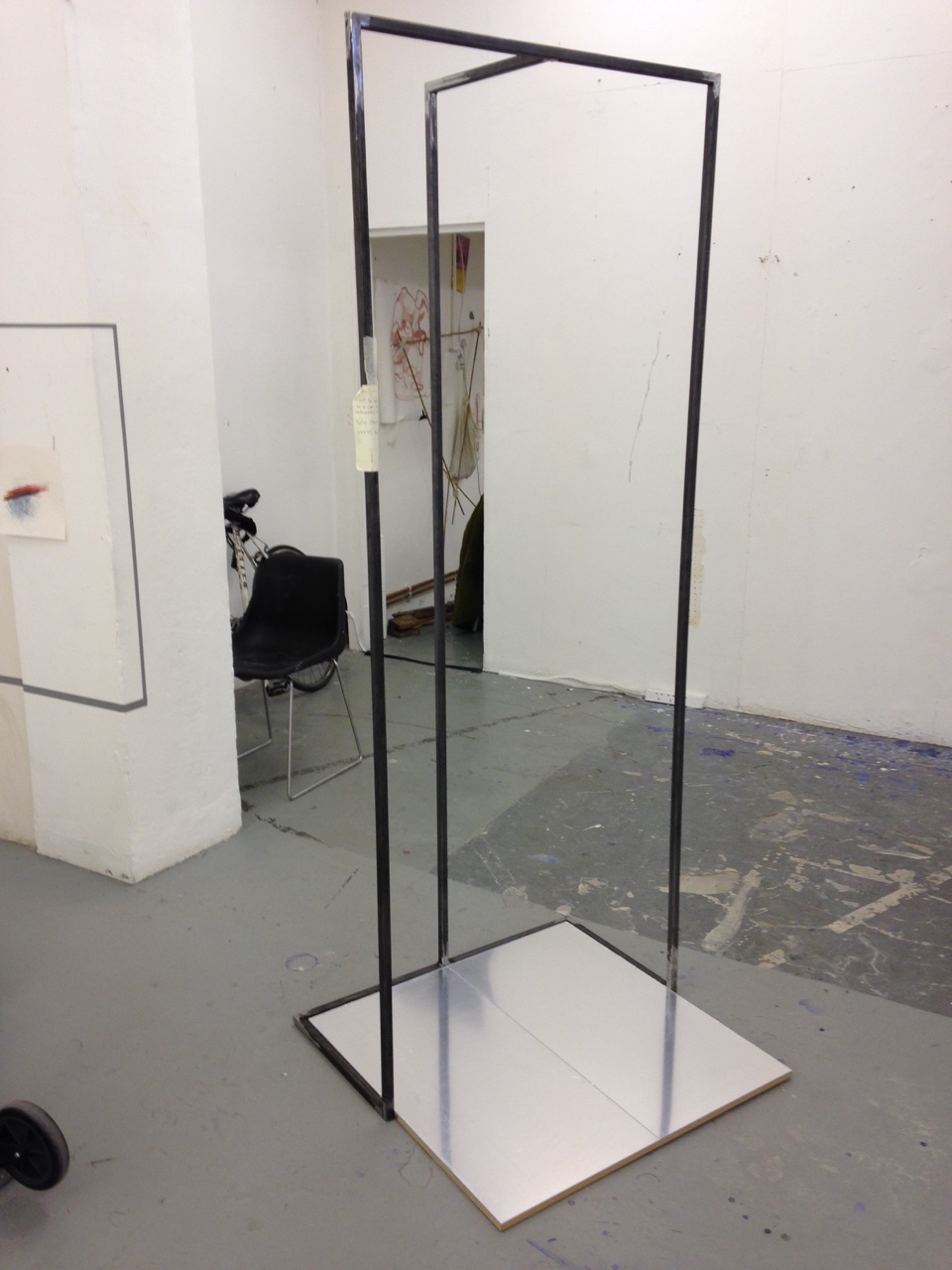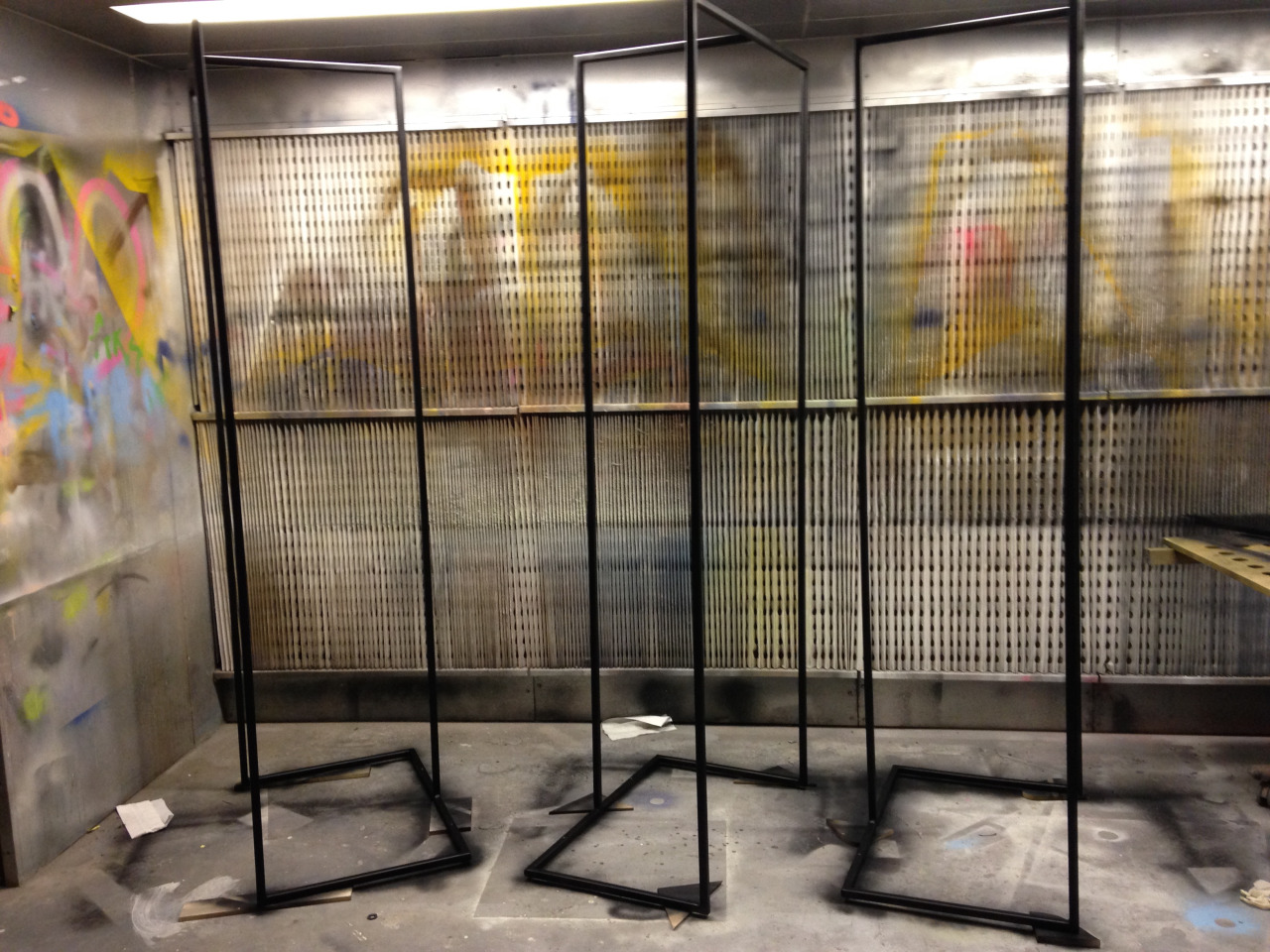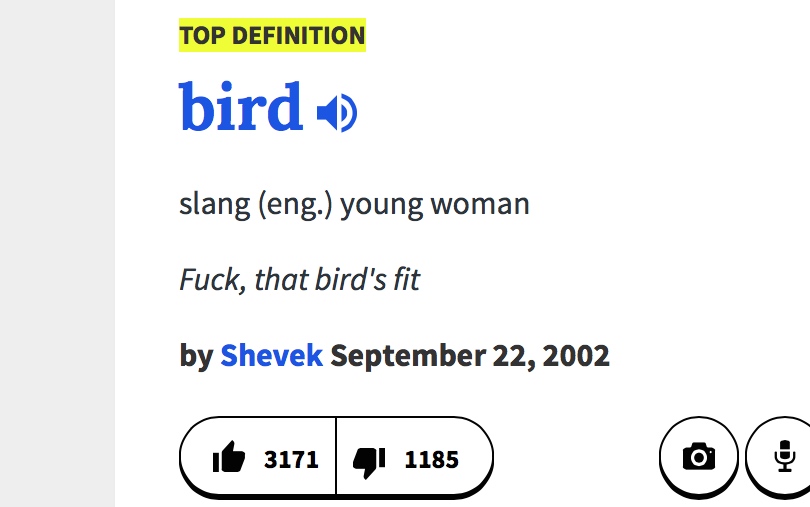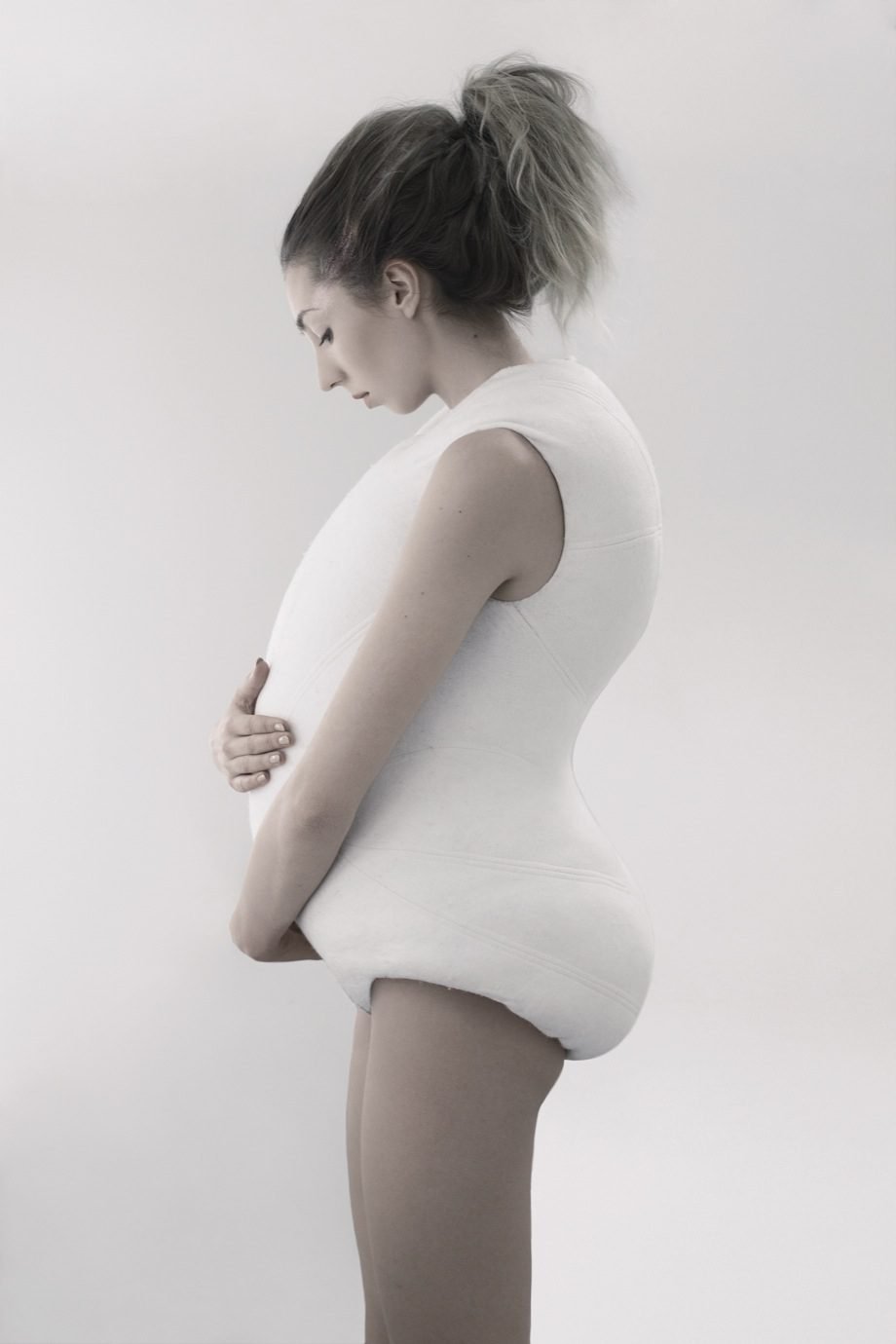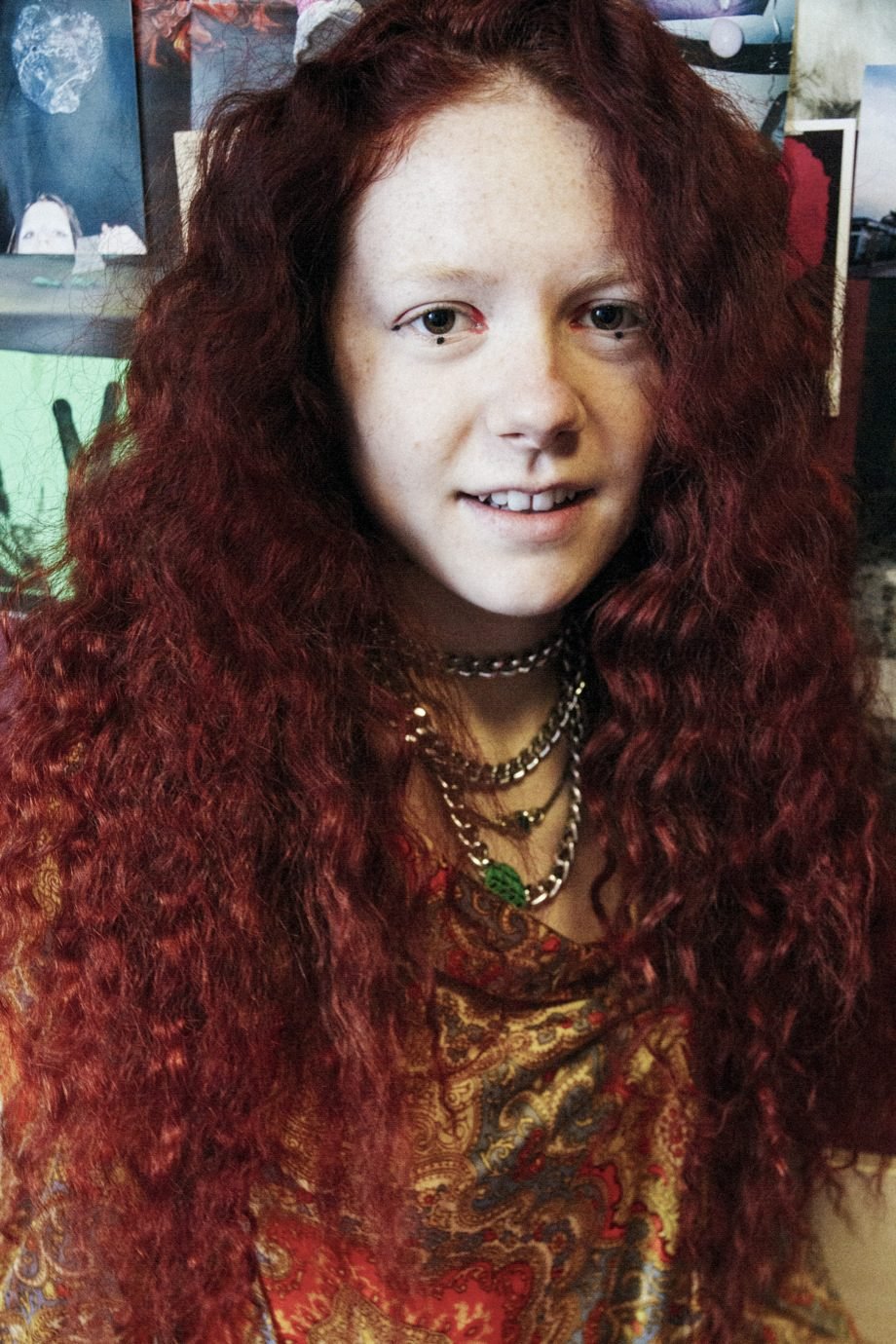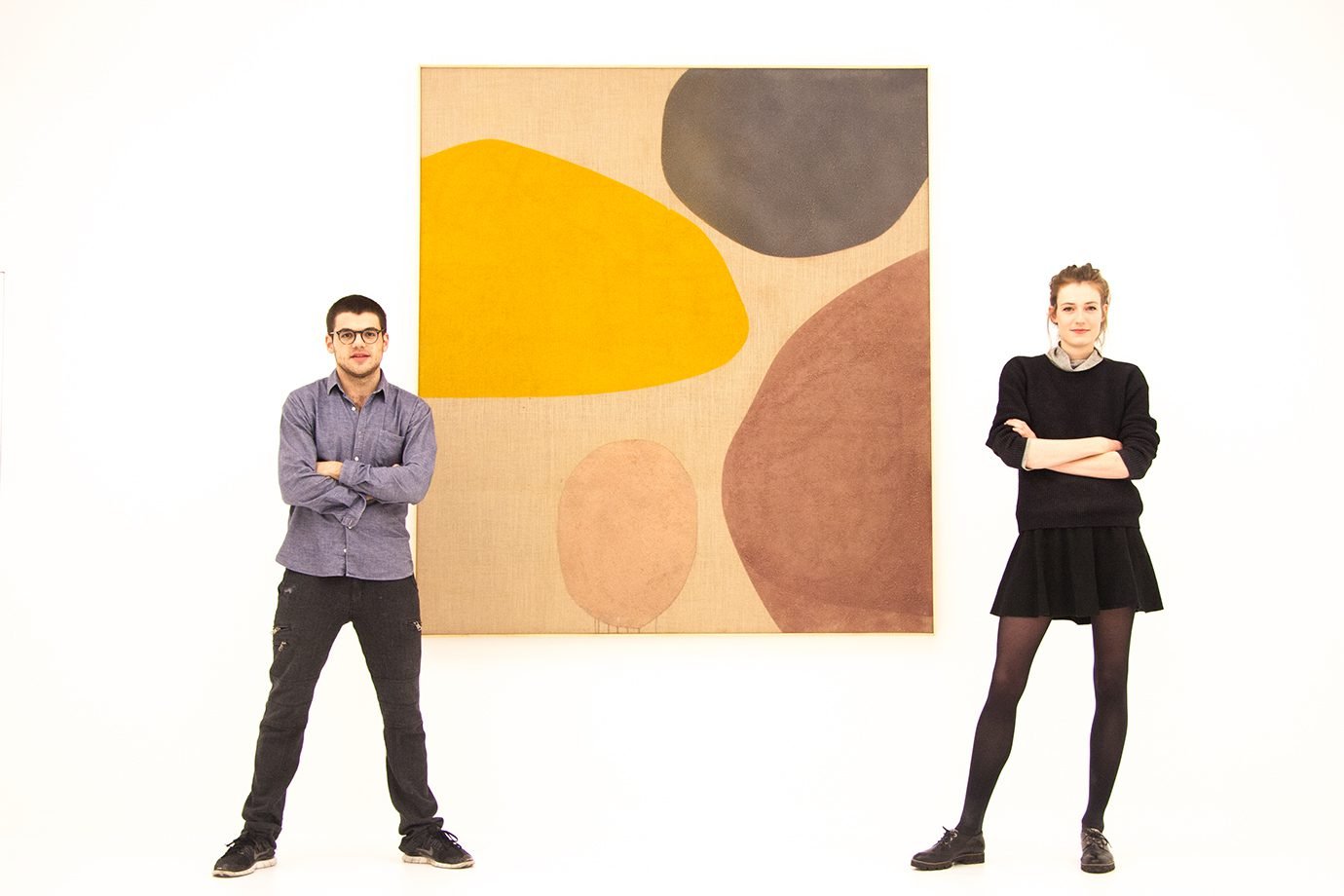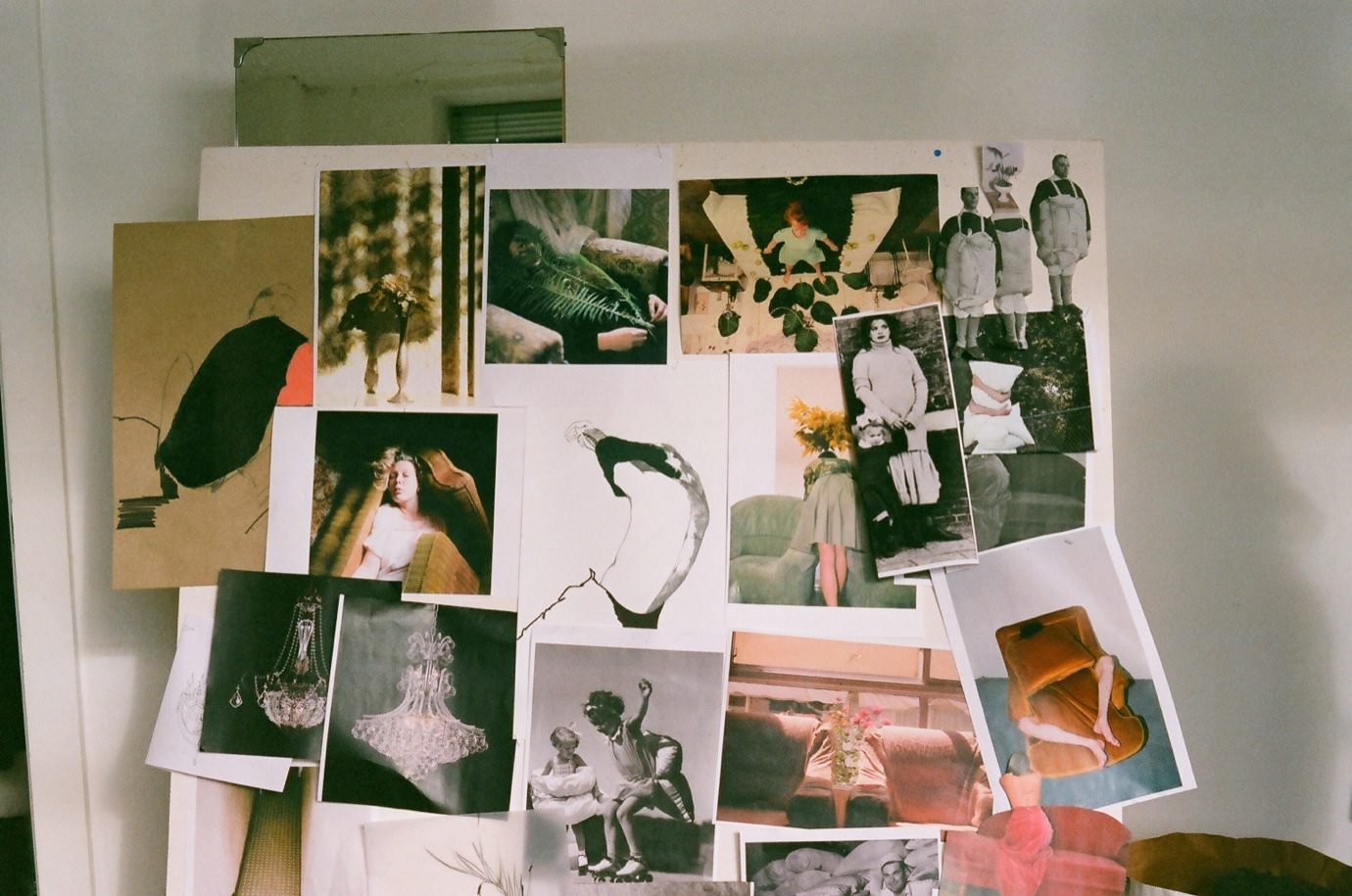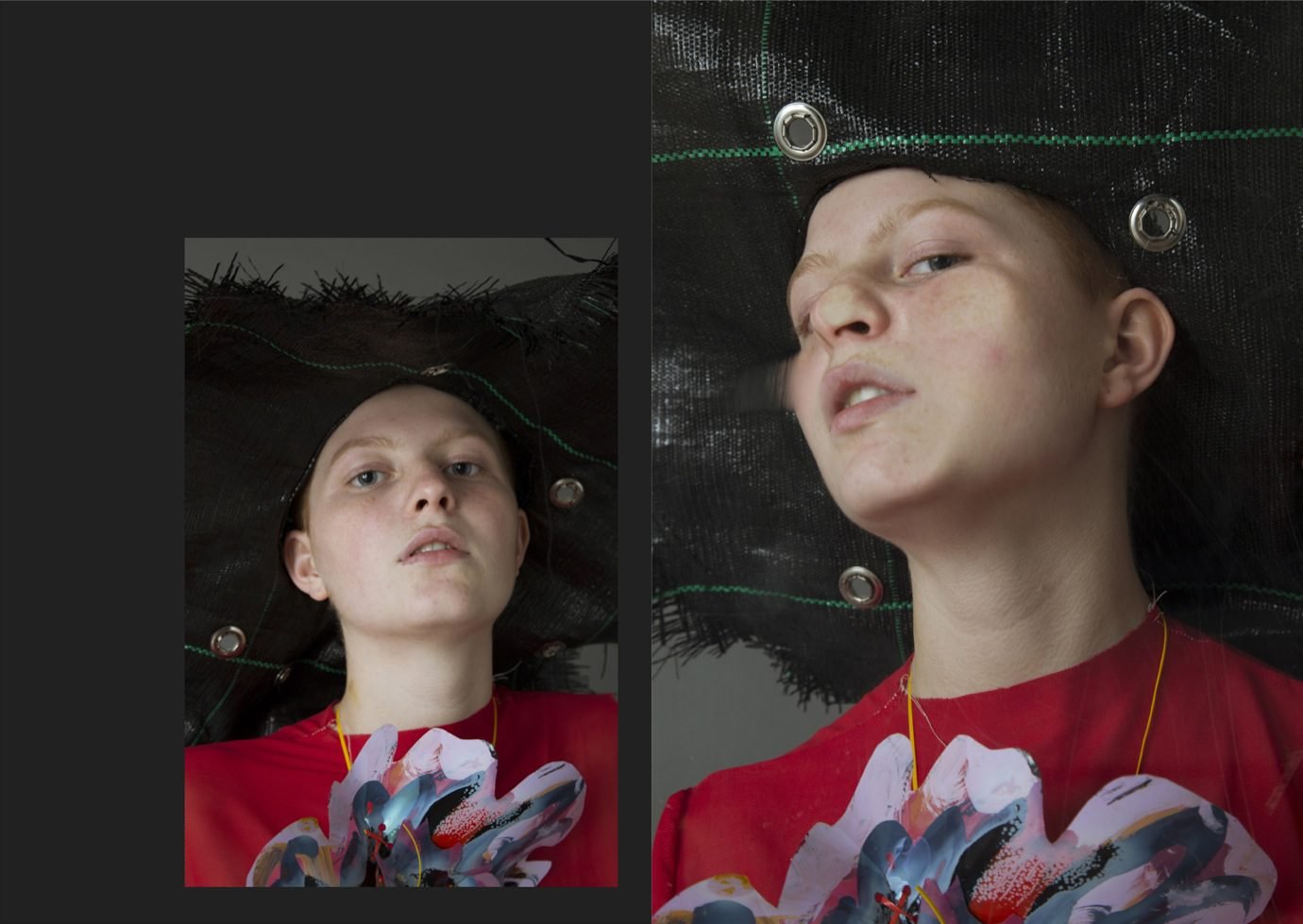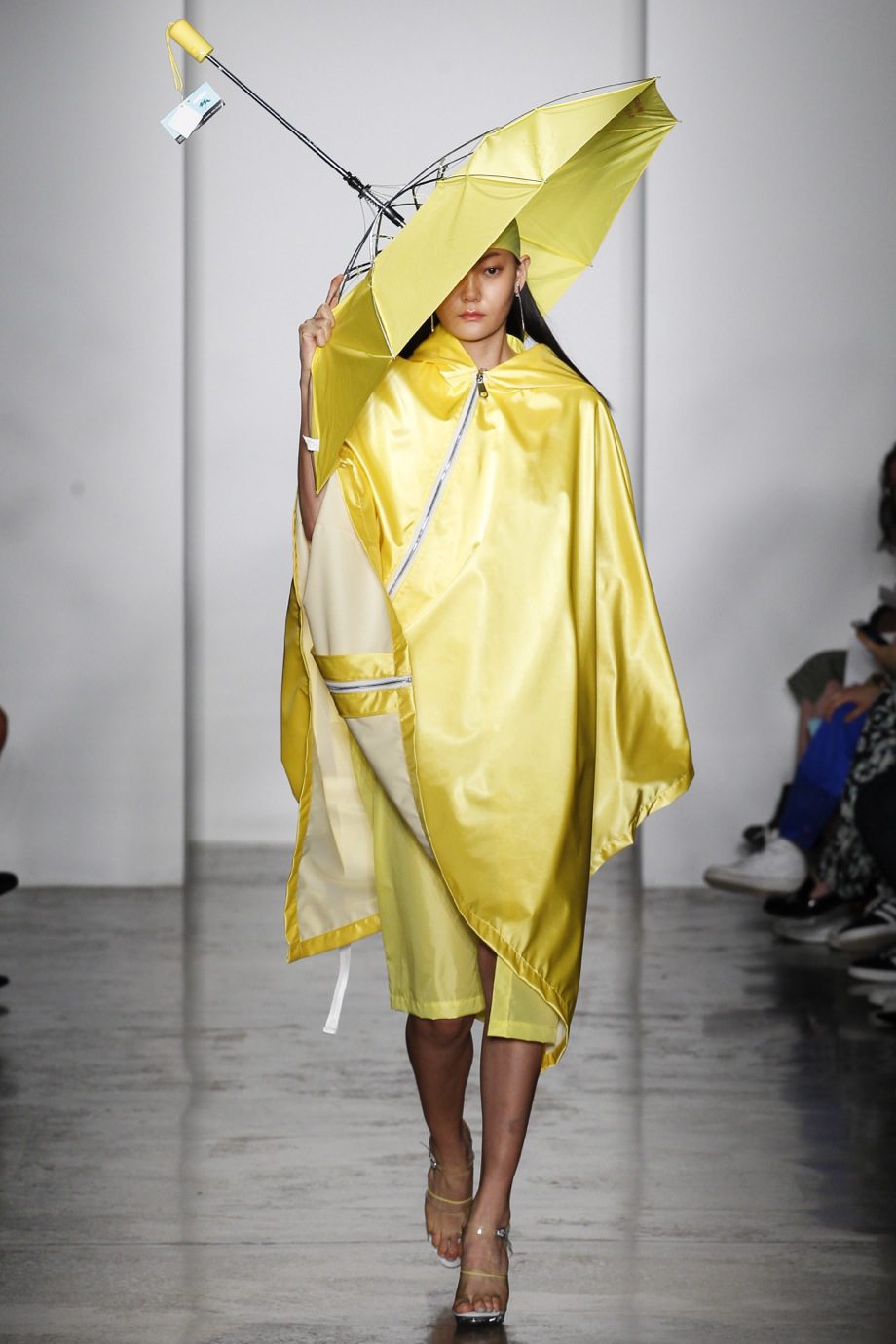Do you think that the inhibition of a woman’s body movements caused by particular clothes suggests erotic fantasies which imply female passivity?
I most definitely think that this inhibition suggests not only erotic fantasies which imply female passivity, but imply in general a way of controlling female bodies. When I watch little girls playing next to little boys, I notice that when they are in complicated dresses with frills and bows and long hair falling in their eyes, they play differently to when they have jeans and sneakers and their hair out of the way. In jeans and sneakers they are less inhibited. This continues through to adulthood where girls and women are not only encouraged to wear more complicated skimpy, revealing clothes but also to spend a lot more time and money on hair, make-up etc. Throughout history we can see ways in which women’s bodies have very clearly been controlled, from Chinese foot binding techniques to corset wearing where women were constantly fainting from having their stays laced so tightly. They all imply passivity.
In Fetishism in fashion when talking about the “worshipping of the modified body” and the corset as a fetish object, Lidewij Edelkoort writes: “the body itself is trained and tortured to become the sculptural object of devotion…the disciplined body is restrained into the perfect shape of submission”. How would your work dialogue with this quote?
In my work whilst I am using my body as a sculptural object and as my medium, I have no desire to become an object of devotion. If anything I am critiquing this notion of the objectified body put on a pedestal, disciplined and restrained into the perfect shape of submission. However once more I harbour certain ambivalence in regard to this kind of objectification because as I already mentioned, having been a professional dancer I spent the early part of my life training hard and yes, sometimes torturing and restraining my own body for the sake of my art. So I suppose my work now is taking all of these things into consideration from the point of view of my own experiences.
Following this line, to what extent do you agree with the idea that clothes not only subliminally inform sexuality but also determine and construct it?
Clothes represent the part of the external image of our individual identities, the part that we show to the world. As soon as we become independent, we choose what we want to wear which in turn expresses something about us. Clothes and our external image are the surface, the interface between us and the people we interact with but it is inescapable that from as early as babyhood people are moulded into the “correct” gender model by amongst other things, the clothes their parents dress them in. So I would agree that clothes do subliminally inform sexuality but they do not necessarily determine and construct it, otherwise how would we account for the spectrum of different sexualities and gender non-conforming people that exist. There are other ways to be and clothes are not the only things that dictate this.
“I STILL THINK THERE IS A LONG WAY TO GO IN TERMS OF EQUALITY AND THAT A VERY LARGE PROPORTION OF SOCIETY NEVER EVEN QUESTION THE GENDER NORMS THAT SHAPE THEIR LIVES. THESE REPRESENT VERY RESTRICTIVE REGIMENS OF CONTROL THAT A LARGE SECTOR OF SOCIETY JUST ACCEPTS AS TRUTH.”





